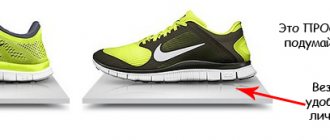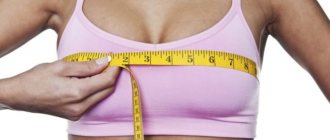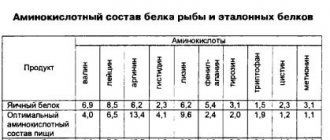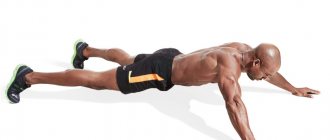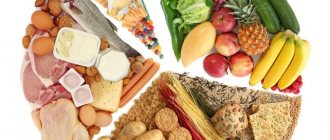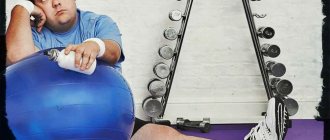Professional-level bodybuilders who compete are evaluated according to many criteria, among which vascularity is of particular importance. Venousness in bodybuilding is a characteristic that reflects the fullness of arterial, capillary, and venous vessels with blood.
Venousness as a criterion for judging at competitions is an indicator of the level of muscle definition and training of the bodybuilder. A proportionally and correctly formed venous network favorably emphasizes the best aspects of the athlete’s figure and visually improves the appearance of the muscles. Achieving the desired level of vascularity becomes possible by increasing the diameter of the vessels.
There are a lot of methods aimed at improving venousness. The vessels become thicker, and the capillary network develops as a result of constant blood flow into the muscles, achieved through special exercises and special methods, as well as taking sports nutrition and pharmacological medications. An example of a method to improve blood filling is the pumping effect, but this is only one of many techniques.
Venousness and its genetic determination
Venousness is an indicator that characterizes the level of blood filling of capillaries, veins and arteries. By the level of its development, others judge the degree of training of the athlete, and the relief of the muscles in particular. A correct, proportionally formed network of blood vessels will emphasize the dignity of the figure and the aesthetics of the bodybuilder’s appearance.
It happens that some athletes work hard for days to get a beautiful and sculpted body, but it remains “smooth,” while others show off with bulging veins after just a couple of sets. It's all due to genetics. Although it is impossible to radically change the situation, there are a number of methods using which anyone can significantly improve the condition of their veins.
Other ways to make veins more visible
There are several more methods on how to pump up your arms so that all the veins are visible. For example, you need to drink a lot of water. This will help the muscles to be in a “puffed up” state. That is, water will not be retained in the body. Another way would be to increase your potassium intake. It will help remove excess fluid from the body.
It is worth paying attention to the amount of carbohydrates consumed. If you want to become the owner of toned arms with veins that will be noticeable, it is best to limit the amount of carbohydrates
They make it more difficult for fluid to drain out and the veins will be less visible. Also, reducing carbohydrates will help reduce the amount of fat in the body.
Thus, to achieve textured veins, you need to combine regular exercise with a special diet.
Professional-level bodybuilders who compete are evaluated according to many criteria, among which vascularity is of particular importance. Venousness in bodybuilding is a characteristic that reflects the fullness of arterial, capillary, and venous vessels with blood.
Venousness as a criterion for judging at competitions is an indicator of the level of muscle definition and training of the bodybuilder. A proportionally and correctly formed venous network favorably emphasizes the best aspects of the athlete’s figure and visually improves the appearance of the muscles. Achieving the desired level of vascularity becomes possible by increasing the diameter of the vessels.
There are a lot of methods aimed at improving venousness. The vessels become thicker, and the capillary network develops as a result of constant blood flow into the muscles, achieved through special exercises and special methods, as well as taking sports nutrition and pharmacological medications. An example of a method to improve blood filling is the pumping effect, but this is only one of many techniques.
Reducing the percentage of subcutaneous fat deposits
The percentage of body fat is the second most important factor, after genetics, influencing the vascularity of the body.
- Due to the fact that lipid reserves are deposited directly under the skin, they literally hide the network of veins like a shield.
- In order to “expose” the blood vessels to the world, you need to significantly reduce the percentage of fat. For men it should be less than 10%, and for women less than 20%. At the same time, venousness in the arms will begin to appear even with a large percentage of body fat, so it’s worth thinking about it and starting reasonable drying. First, you should decide on the caloric intake that is required to maintain your current weight, and then reduce your daily intake by 300-500 calories to create a deficit. Now be patient, because you need to survive this deficit for 2-3 months. A week with this regimen you will lose about 200–700 grams of fat.
- At this very time, increase the degree of physical activity, but not suddenly, but gradually, in successive steps. Your goal is to get rid of as much fat as possible without losing muscle mass.
Overheating
In hot weather, after a sauna or bath, blood circulation increases significantly, and arteries and veins dilate, appearing on the skin as blue bumps. This is especially evident in people prone to edema and changes in blood pressure.
If you are regularly exposed to severe overheating, the walls of the veins will simply stretch and the vessels will bulge constantly.
The main danger that excessively protruding veins can indicate is varicose veins. It occurs due to overstretching of the walls of blood vessels, which in some places begin to swell and bulge tortuously. Most often, this disease affects the legs, however, it can also appear on the arms.
If you suspect varicose veins, you should not waste time and should immediately visit a therapist or phlebologist. At a minimum, you will have to take a course of medication and wear corrective shapewear for a long time. In severe cases, you will have to undergo emergency surgery.
If the veins in your arms bulge strongly, but there are no visible reasons for this, for example, physical training and overheating, then you should pay close attention to this symptom. You may develop varicose veins or suffer from high blood pressure, which also requires timely treatment and constant medical supervision
Muscle gain
The greater the volume of muscle mass, the more blood is required for its functioning. When you eat and train for muscle hypertrophy, the body has to expand its network of blood vessels to accommodate the newly acquired tissue.
Important! According to the experience of professional bodybuilders, good muscle vascularity can be achieved by alternating cycles of reducing fat percentage and gaining muscle mass.
Vascularity in the past
Of course, athletes who competed in the past did not demonstrate the amazing vascularity that we see in competitions today. And this is perhaps not difficult to explain; pharmacology has made a big breakthrough, and today a bodybuilder can minimize his percentage of body fat. And since in the 40-50s, venousness was “not in fashion,” the judges simply did not know what to do with those guys who demonstrated it, and often they were simply demoted in the rating.
Venousness in past athletes was not as pronounced.
Pumping those muscles where there is not enough vascularity
Pump (pumping) - accumulation of metabolites in muscles and swelling of cells, which has a positive effect on muscle hypertrophy.
- You can increase vascularity by pumping as much blood into the tissue as possible through high-intensity training with short rest periods between sets.
- An interesting technique for blood flow restriction (BFR) will help you achieve vascularity in your arms. According to this technique, it is necessary to compress the veins in the working muscles, which leads to the accumulation of blood in them and the obstruction of its return to the heart.
- If you want to develop a network somewhere in certain areas of the body, such as triceps, quadriceps, biceps, then complete the training with high-quality pumping.
- Include isolation exercises in your training, such as arm curls (for biceps), arm extension in a block (for triceps work), leg flexion-extension (in the simulator) in 4 sets. 30/15/15/15 repetitions with rest periods of 30 seconds, using the limited blood flow technique.
What percentage of body fat do you need to have for six pack abs?
What does 30% body fat look like (look at the photo)
If you ask about the normal percentage of body fat, it is different for everyone.
But there is a purely medical definition. For example, for men between 20 and 39 years of age, a body fat percentage above 25% is classified as obese. For men 40 years and older, this figure is 28%. It is also believed that 30% body fat in both men and women puts them at risk. This means they have an extremely high risk of cardiovascular disease and heart problems.
Are you asking how to calculate your body fat percentage? First of all, let's look at body weight. Unless you are a bodybuilder or athlete, a high reading usually indicates high body fat. In this case, a doctor's consultation is necessary. And knowing where fat goes when losing weight.
What does 25% body fat look like (look at the photo)
Another milestone in identifying an unhealthy body type.
25% is not such a big figure, but it still shows in relation to men that we are dealing with excess weight. However, this figure shows that the body's muscle mass can be quite large. In general, a person with 25% body fat will still look fat. And his abdominal muscles will be covered with subcutaneous fat.
What is 20% body fat and what can be said about it (see photo)
This is the point where things start to look a little more promising.
In this case, the person will look like a person of average build. And the ratio of fat to muscle mass is already healthier. This ratio does not bring you very close to the coveted ideal abs. But it is of great importance for your health. A body fat percentage of up to 20% is considered healthy and can prevent many diseases associated with excess weight.
What is 15% body fat? (look at the photo)
In a word - a thin physique.
This person looks thin. If we rely on the heroes of Western blockbusters, then somewhere between Wolverine and Joe Wick. At 15%, the muscle relief and their shape become visible. Body composition is also visible. Vessels become more noticeable on the hands. This is called "you're on your way to six-pack abs."
Let's talk about 10 percent fat. Look at the photo to see what the body looks like
As a general rule, 10% is the safest place on your body fat mass scale. In this case, you are lean enough to show off your muscles. Including abs on the stomach and veins on the arms and legs. But you are not so emaciated by thinness that you look “transparent”. In the end, you can’t live without fat completely, because it is necessary for the body to function properly. By reducing your body fat below 10 percent, you will enter the world of bodybuilders and elite athletes.
8 percent body fat and below (see photo)
...which leads you to the cherished number, which is the final and final point. In addition to bodybuilders, fat has such importance
- racing drivers seeking optimal weight
- fitness models preparing for filming and exhausted by low carb diets and low water intake
- Hollywood actors preparing to film specific scenes
It must be remembered that, despite the pleasant aesthetic appearance, living with such an indicator of body fat is impractical. Even bodybuilders lower their fat content to such minimum levels only before serious competitions. After all, this also affects health. It looks nice though.
Loss of muscle mass, wasting and shrinkage of internal organs, damage to the nervous system, decreased bone density and increased bone fragility are real risks of low body fat. And if you strive for this, you must take all precautions so as not to harm your health.
You can't neglect cardio
Many bodybuilders try their best to avoid aerobic exercise, coming up with various excuses, and switching only to working with iron. Note that cardio cannot be neglected, as it also helps develop veins in bodybuilders. First of all, cardio burns calories (as long as you don't overeat afterwards), and thanks to cardio you will become leaner. And, as you remember, the less fat, the clearer the appearance of the veins.
It is important that systematic aerobic exercise can increase the number of small vessels (capillaries). Friendship with cardio will help you very effectively saturate your muscles with blood and oxygen. Over time, more veins will appear outward, and blood will circulate much better in them.
Physical exercise
In order not to harm blood vessels during sports and not provoke the development of dangerous pathologies, you need to know how to properly train your hands.
Carrying and lifting weights gives a quick effect when the task is set, how to make veins on the arms. But at the same time, this approach can provoke an inflammatory process in the blood channels and varicose veins.
- Push-ups help strengthen the arms and shoulder girdle, increase blood flow to the vessels of the upper extremities, as a result of which they expand and protrude under the skin. To obtain a temporary effect, it is enough to perform about 20 exercises, and to consolidate the result, you need to do 3 approaches daily, gradually increasing the number of push-ups.
- Clenching fists. Often, when taking a blood test or administering an intravenous injection, the nurse cannot clearly see a vein in patients. In such cases, there is a need to pump the arm muscles. Intense clenching and unclenching of the fist increases blood flow to the muscle structures, which in turn increases the pressure in the vessels and they begin to appear under the skin. For this purpose, you can use a simple exercise machine - an expander.
Effective exercises for pumping up your arms include the following:
- curling arms with dumbbells;
- pull-up;
- lifting the barbell from the chest, above the body, in a sitting position with arms bent at the elbows;
- extension of the upper limbs with a barbell;
- push-ups on parallel bars.
It is important to choose the right type and degree of load in order to get a good result and not harm your health.
Use of sports supplements
Swollen veins in bodybuilders may be the result of increased blood flow during training. And it, in turn, is observed from the production of nitric oxide (NO). This substance helps to dilate blood vessels, through which blood circulation increases. Taking into account these properties of nitric oxide, pharmaceutical companies have developed special drugs to improve vascularity. You can start with the following names:
- Citrulline. Just a couple of years ago, L-arginine, a precursor to NO, was considered a top muscle pump supplement. But it was successfully replaced by citrulline, which is able to increase the level of arginine without complications for the digestive system more than arginine itself. Dosage: take 6-8 g of the drug 40 minutes before the start of training. To enhance the effect, you need to take the product at a time, without dividing it into several doses throughout the day.
- Nitrates. As you know, the two most common sources of nitrates are pomegranate and beets (in juice or extract). Both of these products have a vasodilating effect when consumed before sports activities. Doses: 1000 mg approximately half an hour before training.
- Creatine. This is a cumulative substance. Creatine remains in muscle cells, which promotes their swelling. As a result, the biceps swell more and more, and increased venousness is observed. Dosage: 5 g of creatine monohydrate per day.
- Thermogenics. Thermogenic supplements help increase the body's production of heat. In response to this, more and more blood rushes to the skin to cool the body. Select a thermogenic to suit your taste: capsaicin (a component of hot peppers), caffeine, green tea, ginger, etc.
- Agmatine in a dosage of 0.5-1 g 30 minutes before the start of classes.
- Coenzyme Q10 (including its effective form Ubiquinol). Dose: 100 mg, in combination with vitamins E and C.
- Clenbuterol, and other complex products to increase pump levels.
Preparations for vascularity in bodybuilding are numerous and varied, but do not overdo it with chemistry. Before taking, be sure to consult with your doctor.
Interesting! The best time to show off clearly defined veins in bodybuilding is 15-20 minutes after finishing your workout.
How to improve the visibility of veins?
There are many answers to this question, which we will discuss below:
1. Intense training in the “pumping” style. The essence of this method is a high number of repetitions (15-25) with a relatively light weight (about 40-50% of the maximum). All movements should be performed slowly and under control, with a “feeling” of the working muscle group. The “drop set” technique can also be used, which is “finishing off” a muscle with light weight after reaching failure without resting between approaches. For example, you did 3 sets of leg presses, on the 4th set you hang a weight with which you can do the exercise for 4-6 repetitions. Perform the 4th approach to failure, then remove two plates without rest, immediately performing the approach to failure. Then again remove 2 pancakes and perform the exercise to failure. In this case, it is advisable that it is not you who removes the weights from the machine, but someone else. To avoid wasting time (getting up, taking off the weights, sitting down again at the exercise machine, etc.).
When doing drop sets, be sure to get help from a friend in the gym. The number of “finishing” sets is rarely limited to one. You just need to take into account that for athletes who eat poorly, do not follow the regime (do not use pharmaceutical support), and other subtleties in BB, this method (especially its more stringent variations) can cause damage, causing only overtraining and intense muscle pain, which is not accompanied by subsequent growth . Of course, this does not mean that you should not resort to such a training method. You just need to understand that after hard training, the body needs nutrients in large quantities, especially during the cycle.
2. Use of sports nutrition supplements such as arginine, histidine and citrulline. These drugs significantly increase the synthesis of nitric oxide in the body, thereby promoting a stronger muscle “pump” during exercise and the expression of the venous network. In addition, such supplements improve the delivery of nutrients to muscle tissue, potentially influencing muscle growth. To achieve vascularity, they are considered by many bodybuilders to be the best choice.
3. Dieting. Often veins are invisible not due to their poor development, but due to the large amount of subcutaneous fat
Therefore, first of all, you need to try an effective diet, and only then, if the desired effect is not achieved, pay attention to pharmacology and the training process. Of course, we are talking about performing athletes
Venousness is of no use to the average person or someone who likes to sip iron.
4. The use of pharmacology that increases the number of red blood cells (and therefore blood volume). The first rows of this list include testosterone, nandrolone and oxymetholone. Although, almost any androgenic-anabolic drug can have this effect. The differences will only be in the degree of severity of this effect. Also, many steroids can have a fat-burning effect, which greatly affects the visibility of veins.
Venousness: all the pros and cons
It's no secret that all athletes dream of looking attractive, and even brutal.
- Proportionally developed veins protruding from under the skin visually make the athlete much more developed. But the obvious advantages are overshadowed by many disadvantages. When working on veins, the athlete must exercise extreme caution.
- This is explained by the fact that many pharmacological drugs have multiple side effects, having a negative effect on the cardiovascular system, increasing the risk of strokes and heart attacks. This is especially pronounced when supplements are used incorrectly.
- In addition, hypertrophy of the capillary-venous network can cause varicose veins, to which the fairer sex is especially prone. Therefore, when identifying a person’s predisposition to this type of problem, it is better to be careful.
- In other words, before you develop vascularity, weigh the pros and cons. Remember that a minimum of adipose tissue and a body covered with a network of veins is, rather, the prerogative of professional bodybuilders rather than ordinary gym goers who come for an athletic figure and health, which, for high-class professionals, is often not the first priority place.
What do you think, what lengths can an athlete go to in order to show veins, and is it necessary to pay attention to this nuance at all? Share your opinion in the comments.
Vein diseases in athletes
Until recently, very little attention has been paid to vein diseases in athletes. However, varicose veins are quite common among athletes. We are talking about primary varicose veins of the lower extremities, mainly superficial, and the veins of the spermatic cord. As is known, primary varicose veins are an independent disease, in contrast to secondary ones, which are a consequence of some pathological condition (deep vein thrombosis, thrombophlebitis, etc.). The literature devoted to venous diseases in athletes is limited. The first works on this disease appeared in early 1970. The percentage of athletes with varicose veins is significantly lower than among the general population. Thus, according to V.S. Savelyev (1976), primary varicose veins of the superficial veins of the lower extremities occur in 15-17% of the total population and more often in women. Among athletes, this percentage ranged from 2.3 to 4.2 and was most common in men. According to P.V. Pryatkin, among applicants to the Belarusian Institute of Physical Culture (over 3 years he examined 3560 people), 2/3 of venous lesions were localized in the spermatic cord and only 1/3 in the veins of the lower extremities, and in 83% of cases these were athletes training endurance skills (running, cycling, skiing), and only men. Varicose veins were one of the main reasons for refusal of admission to the Belarusian State Institute of Physical Culture. Thus, out of 147 applicants who were not accepted into the institute, in 46 this was a consequence of varicose veins. V.F. Bashkirov and V.I. Simakov (1965), I.B. Khabinsky and V.F. Bashkirov (1979) examined 203 athletes with varicose veins of the lower extremities. It turned out that women made up 26.6%, with basketball players in first place; by location - the veins of the lower leg were affected in 69%, the thighs - in 13%, the lower legs and thighs - in 18% of cases. All patients were affected by the great saphenous vein in the thigh and anterior inner surface of the leg
All athletes complained of a feeling of fullness in the affected limb, pain along the varicose vein, especially during physical activity, and, most importantly, a decrease in athletic performance, in particular in sports related to running (skiing, track and field running and etc.)
A. S. Kalugina and E. E. Zakolodnaya (1988) believe that disturbances in venous hemodynamics occur not only during skiing and track and field running, but also during weightlifting and cycling. The main cause of this disease is physical activity and increased intra-abdominal pressure, which complicates the outflow of blood from the inferior vena cava. The congenital weakness of the venous wall and valve apparatus of the large saphenous and other communicating veins of the lower extremities is of known importance. According to V.F. Bashkirov and V.I. Simakov (1975), this disease is more common in athletes whose training involves cyclic, relatively monotonous work or an “explosive” load associated with a constant return to certain body positions (for example , all types of wrestling). Considering that the disease progresses, reduces athletic performance and is observed more often in highly qualified athletes, questions about the doctor’s tactics when it is detected and about active treatment are relevant. Apparently, conservative treatment methods (elastic bandages, stockings, massage, water treatments) should be used first. However, the most radical treatment method is surgery. The issue of admission to sports is decided strictly individually
Sports doctors should always pay attention to the condition of the veins of the lower extremities and, of course, the veins of the spermatic cord
You must be logged in to post a comment.
When to see a doctor
Swollen veins in the arms cause a lot of discomfort. As the problem progresses, if it is caused by various pathological factors, the condition worsens. The vessels begin to bulge strongly, the patient is concerned about increased pain and swelling of the limbs in the evening.
If the veins are visible, the following symptoms will be observed:
- heaviness and pain in the hands;
- numbness of fingers;
- frequent desire to throw the head back.
When a lesion appears against the background of thrombophlebitis or other vascular diseases, additional signs appear:
- redness of the epidermis;
- skin thickening;
- temperature increase;
- swelling.
Causes
Most often, swollen veins in the arms appear as a result of exposure to provoking physiological factors. However, there are cases when dilated venous vessels may indicate serious vascular pathologies.
Physiological reasons include:
- Hereditary predisposition. This problem is mainly diagnosed in people whose relatives have protruding blood vessels on their hands.
- Lack of fatty tissue in the skin. If it is in small quantities, it can cause the veins to become noticeable.
- Age. As a person ages, blood vessels become less elastic and weakened. As a result, stagnation of blood fluid and dilation of veins occurs. In addition, aging leads to thinning of the skin, against which the blood vessels become more visible.
- Hot weather. Too high an air temperature can provoke vascular dilation and disrupt the functioning of venous valves. It is for this reason that blood vessels protrude strongly on the surface of the epidermis in the hot season.
- Hormonal imbalances. Often occurs during pregnancy or at the onset of menopause in women in adulthood.
- Intense physical activity. Protruding veins on the upper extremities are a fairly common occurrence in people involved in heavy work or sports. Such types of activities contribute to an increase in blood flow, increased hardness of muscle tissue, which can provoke an expansion of the venous lumen.
Pathological causes include:
- Phlebeurysm. This is a pathological condition that leads to stretching of blood vessels as a result of increased pressure in them. The development of the disease can be facilitated by genetic predisposition and lifting heavy objects.
- Thrombosis. It is characterized by blockage of the veins of the upper extremities by a formed blood clot. This disease may not manifest clinical symptoms for a long time. When a critical condition occurs, paralysis develops.
- Thrombophlebitis. This is a disease characterized by inflammation of the vascular walls. Occurs as a result of partial or complete blockage of blood flow.
- Postphlebitic syndrome. This is a consequence of complicated thrombosis. It is characterized by damage to the vascular walls, which leads to inflammation of the veins.
- Dermatitis and eczema. They refer to skin pathologies that are accompanied not only by rashes and peeling of the skin, but also by painful sensations in the veins of the upper extremities.
Timely identification of the factor that caused the veins to pop out allows you to get rid of the problem in the shortest possible period.
In guys, veins can bulge due to the development of various abnormalities in the health of the circulatory system. In addition, this problem also arises as a result of physiological factors, among which are:
- thin build;
- regular exercise;
- carrying and lifting heavy objects.
In girls, this condition develops for the same reasons as in representatives of the stronger sex.
Here you can also add hormonal levels, which can be disrupted during the period of bearing a child, as well as with the onset of menopause at a more mature age.
Prevention
To prevent veins from bloating, you need to follow some simple recommendations:
- control body weight;
- do not wear tight clothing;
- avoid lifting heavy objects;
- minimize physical activity;
- eat a balanced diet, eat more fresh fruits and vegetables;
- lead a healthy lifestyle.
Due to the fact that the veins in the arms can protrude for various reasons, you should not self-medicate.
At the first signs of deviations, it is better to consult a specialist. He will help identify the provoking factor that caused the problem and select the most optimal treatment option.
Treatment
If the pathology is diagnosed in a timely manner, then in order to remove bulging veins, it will be enough to use drug therapy.
In this case, the following drugs may be prescribed:
- Non-steroidal anti-inflammatory drugs - Ketonal, Ibuprofen. Allows you to eliminate pain and stop the inflammatory process.
- Improving blood circulation - Vasoket, Actovegin, Trental. Minimize the likelihood of developing blood stagnation.
- Anticoagulants such as Aspirin. Helps thin the blood and reduce the risk of blood clots.
- Fibrinolytic enzymes – Fibrinolysin, Urokinase. Their action is aimed at thinning the blood.
- Antiplatelet – Dipyridamole.
- Local action - Dolgit, Troxevasin. Relieves pain syndrome.
Each drug has a different composition and mechanism of action. Therefore, only a doctor can prescribe medications based on the general condition of the patient.
ethnoscience
At an early stage of development of the inflammatory process affecting the veins in the arms, it is also possible to use folk remedies.
It is worth using one or more of the most effective recipes:
- Concentrated apple cider vinegar. Before use, it must be diluted with the same volume of tincture prepared from birch buds. This composition is used to lubricate hands in the morning and evening.
- Grate several heads of garlic, mix with butter in a 1:1 ratio. Apply the resulting mixture to a bandage and apply to the affected skin of your hands. Secure the bandage with adhesive tape. The course of treatment with this method lasts from three to five months.
- Mix crushed wormwood flowers and yogurt in equal quantities. The product is applied to the skin for about a third of an hour. Residues of the medicine are removed under running water. Next, you need to apply high-fat sour cream to your hands for a couple of minutes.
It is important to remember that, no matter how effective this or that method of therapy is, especially for unconventional methods, it can only be used after consultation with a specialist.
Exercises
Certain exercises can help get rid of protruding veins:
- straighten your fingers back, first one by one, then together;
- tilt your thumb forward and backward with a slight movement;
- spread your fingers out to the sides as much as possible,
- walk your fingers across the table.
Procedures
The following measures are helpful in treating bulging veins:
- Sclerotherapy. The impact on the affected area is carried out by introducing a special liquid that glues the vessel, which helps to completely stop blood circulation.
- Hirudotherapy - treatment with leeches. It will only take a few sessions to normalize blood flow and improve blood vessels.
- Ultrasound. Under the influence of waves, formed blood clots are destroyed.
- Laser therapy. It is one of the most painless and safe methods. The vessels are irradiated with a special laser and glued together.
Your doctor will tell you which method to choose.



